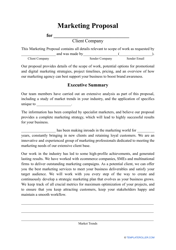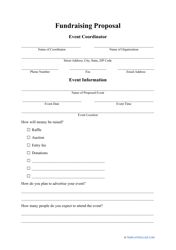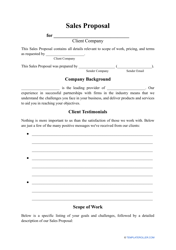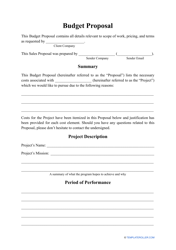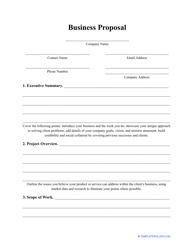How to Write a Proposal Letter: Free Proposal Letter Template

A Proposal Letter is a type of email that accompanies your proposal and helps sell your idea to your potential client. The letter can either serve to advertise the proposal (sent as a separate document) or be the proposal in and of itself.
Proposal letters play a vital role in any marketing or sales strategy. A professional and influential letter has the potential to increase the likelihood of your proposition getting accepted by your customer.
How to Start a Proposal Letter?
Your letter serves one main purpose - to capture and hold the attention of a potential business partner. The way you open your proposal plays a vital role in its success
- Make sure that you do your research . The more preparation you do the better your proposal (and your Proposal Letter) will be. Make sure that you’re both aware of your target audience and your own company’s path and goals.
- Have a clear roadmap in mind . Your proposal will include a detailed analysis of your objectives, goal posts, and profit estimates. The letter you write to accompany the proposal should clearly reflect the information within the document.
- Address any potential risks . Clearly detail the measures your company will take to eliminate any financial or legal risks your client may potentially face.
Business Proposal Letter Template
Having a ready-made Business Proposal Letter template will eliminate the stress of having to reinvent the format of your letter for each specific client. Your template should be versatile and customizable and should include the following sections:
- Company Background . Start with a strong pitch to introduce your company and it’s primary area of expertise.
- Proposal Purpose . State the purpose of your proposal and identify your company’s unique ability to cater to your client's specific business needs.
- Goals and KPI . This section will be unique to the type of project or service you are proposing, but should, at the very least, include cohesive and comprehensive graphs, figures, and charts to clearly illustrate your main objectives.
- Uniqueness . Use this part of the letter to further highlight the features that make your brand stand out among your competition.
- Budget Allocation . Go into detail about the way the client's money will be used to complete the project with maximum efficiency.
How to End a Proposal Letter?
A good Proposal ketter should always conclude with a call to action. Ask your customer to take any additional step - be it to respond with a time for a follow-up call or to schedule a check-in to discuss the nuances of the proposal. This can play in your favor: including a call to action may increase the likelihood of you getting a follow up on your letter and will definitely show that you are serious about this proposal.
How to Write a Proposal Cover Letter?
A Cover Letter serves as the first page of the proposal and is used to summarize its contents. Similar to a Proposal Letter, the cover letter should introduce your project (albeit without going into too much detail), list the key points of your business proposal, and showcase the unique features of your business. The letter should be concise and straight to the point.
In addition to this, the cover letter should provide your contact details and official credentials and be signed by your company's executive director or head of marketing.
How to Follow Up on a Proposal?
Is your deal stuck? Has the customer ghosted you? Do you have no idea about how to get things moving again? Here’s how to push your proposal forward without coming off ass unprofessional or annoying:
- Wait three to five business days before sending a follow-up email. Waiting for a week will allow the client to get acquainted with your proposal. Overstepping a boundary and coming off as too pushy will definitely play against you and scare potential clients away.
- Come up with a clean new subject line . Definitely don’t send the follow-up email as a response to previous correspondence. Long email threads can and do get lost in the usually over-stuffed inboxes.
- Keep your email brief and concise . State your point, provide a call to action, and suggest that you would be happy to hear back from the client.
- Make the letter personal . Avoid having your letter sound like an automatically-generated response that gets sent out to everyone on your mailing list.
- Restate the value of your proposal . If possible, briefly mention the unique value your proposal holds and the benefits working with you will bring.
How to Respond to a Business Proposal Rejection Email?
Okay, your proposal has been rejected. What do you do now? Rejection emails are an expected feature of any marketing campaign, and knowing how to handle a refusal is a valuable skill to learn.
- Let the recipient know that you’re open to future interactions . Make sure that your response is casual and does not ask the reader to take any action.
- Keep it short . Show that you respect the reader’s time by limiting your response to a few key phrases.
- Try to ask for the reader’s feedback . Asking your reader to answer a question can potentially lead to a positive interaction and will help you build rapport in case you end up working together in the future.
Related Topics:
